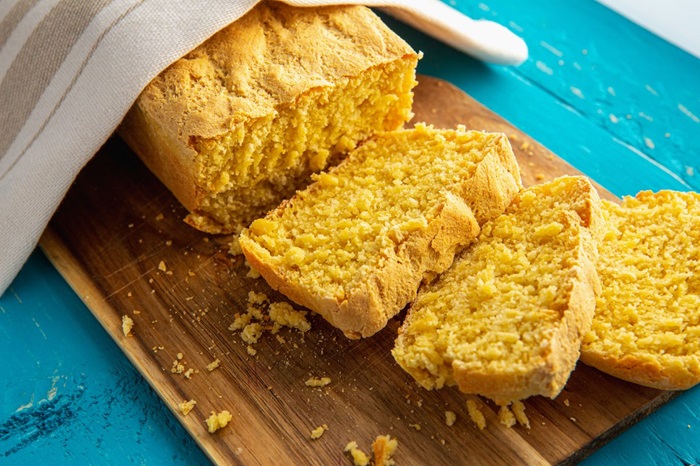Cornbread is a beloved staple in many cuisines, particularly in Southern and comfort food dishes. Its moist texture and slightly sweet flavor make it a crowd favorite, but for individuals living with diabetes, it can be a cause for concern. The main question that arises is whether cornbread is a safe and healthy option for people managing diabetes, especially since it is often made with refined carbohydrates and sugars.
In this article, we will dive deep into the topic of cornbread and its impact on diabetes. We will explore its nutritional profile, the potential risks, and how diabetics can enjoy cornbread in a healthy and controlled manner. By understanding its ingredients and how they affect blood sugar levels, diabetics can make more informed decisions about including cornbread in their diet.
Introduction to Cornbread and Diabetes
Diabetes requires careful management of blood glucose levels to prevent long-term complications. Diet plays an essential role in this process. Cornbread, traditionally made from cornmeal, flour, eggs, milk, and butter, can be high in carbohydrates and fats. These components can cause rapid spikes in blood sugar, which can be problematic for people with diabetes. Understanding how cornbread affects blood sugar and what modifications can be made can help diabetics make informed decisions about including it in their diet.
Nutritional Profile of Traditional Cornbread
Traditional cornbread contains several ingredients that are important to consider for those with diabetes: Cornmeal is a significant source of carbohydrates and can contribute to higher blood sugar levels if consumed without moderation. All-purpose flour adds more carbohydrates and lacks fiber, which can slow down digestion and the absorption of sugars. Eggs provide protein and little carbohydrate content, making them a beneficial component. Milk contributes some carbohydrates as well as calcium and vitamins. Butter or oil adds fat, which can increase the calorie count but does not directly affect blood sugar levels. The combination of these ingredients can result in a dish that is not ideal for uncontrolled consumption by diabetics.
Impact of Cornbread on Blood Sugar Levels
The primary concern with cornbread for diabetics lies in its effect on blood sugar: Because cornbread often has a high glycemic index (GI), it can lead to quick rises in blood glucose after eating. The GI measures how rapidly foods cause blood sugar to rise. Foods with a high GI can pose challenges for blood sugar control. However, modifying the recipe can reduce its impact. Using whole-grain cornmeal and incorporating additional fiber sources can lower the GI and improve the overall nutritional profile of the cornbread. Additionally, serving size and timing of meals play crucial roles in how cornbread affects blood sugar levels.
Practical Tips
Here are some practical tips for enjoying cornbread while maintaining blood sugar control
Choose recipes that use whole-grain cornmeal instead of refined cornmeal to increase fiber content.
Incorporate healthy fats like olive oil or avocado oil to add flavor without increasing carbs.
Use alternative sweeteners such as stevia or monk fruit extract if a sweeter taste is desired.
Add vegetables like bell peppers, onions, or spinach to boost nutrition and fiber.
Serve smaller portions and pair cornbread with lean proteins and non-starchy vegetables.
Monitor blood sugar levels before and after eating cornbread to understand personal responses.
Cultural Significance of Cornbread
Cornbread holds deep cultural roots in various parts of the world: In the Southern United States, cornbread is an iconic comfort food, often served with barbecue, beans, and greens. It reflects the agricultural heritage of the region where corn was a staple crop. Native American cultures have long used corn in their diets, preparing it in different ways that were passed down through generations. In Mexico, cornbread’s cousin, the tamale, represents a vital part of festive celebrations and daily life. The cultural importance of corn extends beyond its culinary uses, symbolizing community, tradition, and sustenance.
Simple Recipe for Healthier Cornbread
Ingredients:
- 1 cup whole-grain cornmeal
- 1/2 cup all-purpose flour or whole wheat flour
- 2 tablespoons baking powder
- 1/4 teaspoon salt
- 1 cup unsweetened almond milk or other plant-based milk
- 1/4 cup olive oil or melted coconut oil
- 2 large eggs
- 1/4 cup honey substitute or another low-carb sweetener
- 1/2 cup chopped bell peppers (optional)
- 1/2 cup diced onions (optional)
Instructions: Preheat oven to 400°F (200°C). Grease an 8-inch square baking pan. In a large bowl, whisk together the cornmeal, flour, baking powder, and salt. In another bowl, mix the almond milk, olive oil, eggs, and sweetener until well combined. Add the wet ingredients to the dry ingredients and stir until just mixed. Fold in the optional bell peppers and onions. Pour the batter into the prepared pan. Bake for 20-25 minutes or until a toothpick inserted into the center comes out clean. Let cool slightly before serving.
Conclusion
While traditional cornbread may not be the best option for diabetics due to its potential to cause rapid increases in blood sugar, there are ways to enjoy it within a balanced diet. By choosing healthier ingredients, being mindful of portion sizes, and pairing it with nutritious foods, diabetics can still savor the comforting taste of cornbread. Recognizing the cultural significance of cornbread can deepen appreciation for this versatile dish. Making adjustments to recipes allows everyone, including those with diabetes, to partake in the joys of home-cooked meals that connect us to our traditions and histories.
Related topics:


